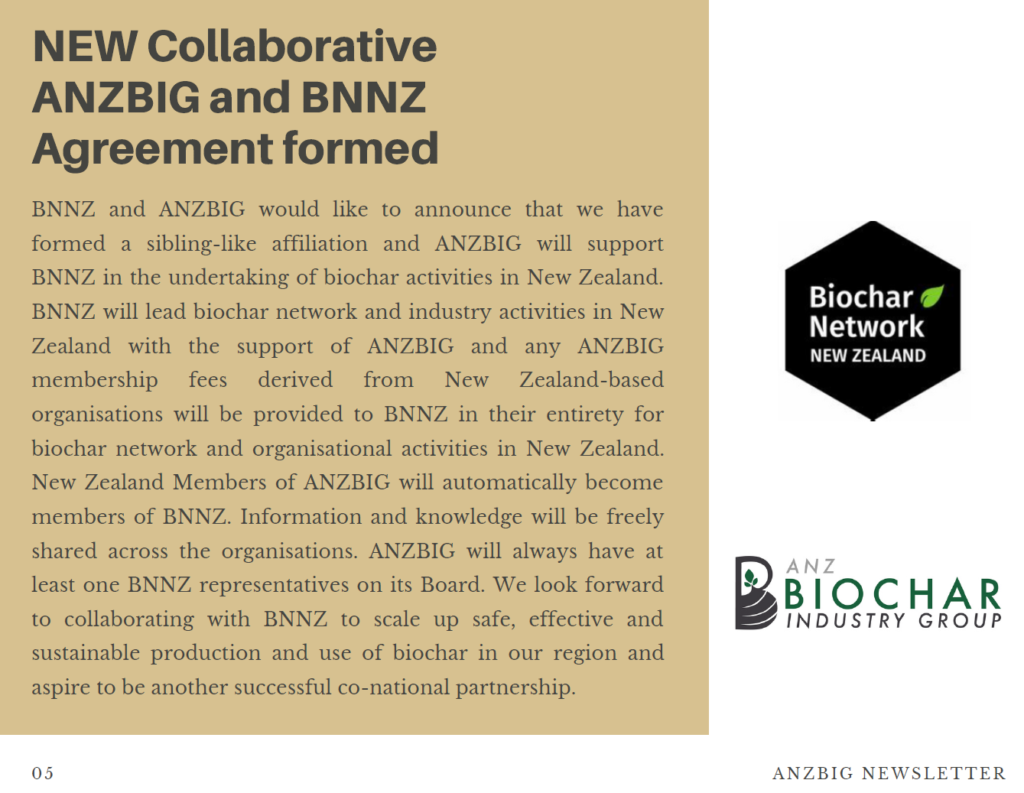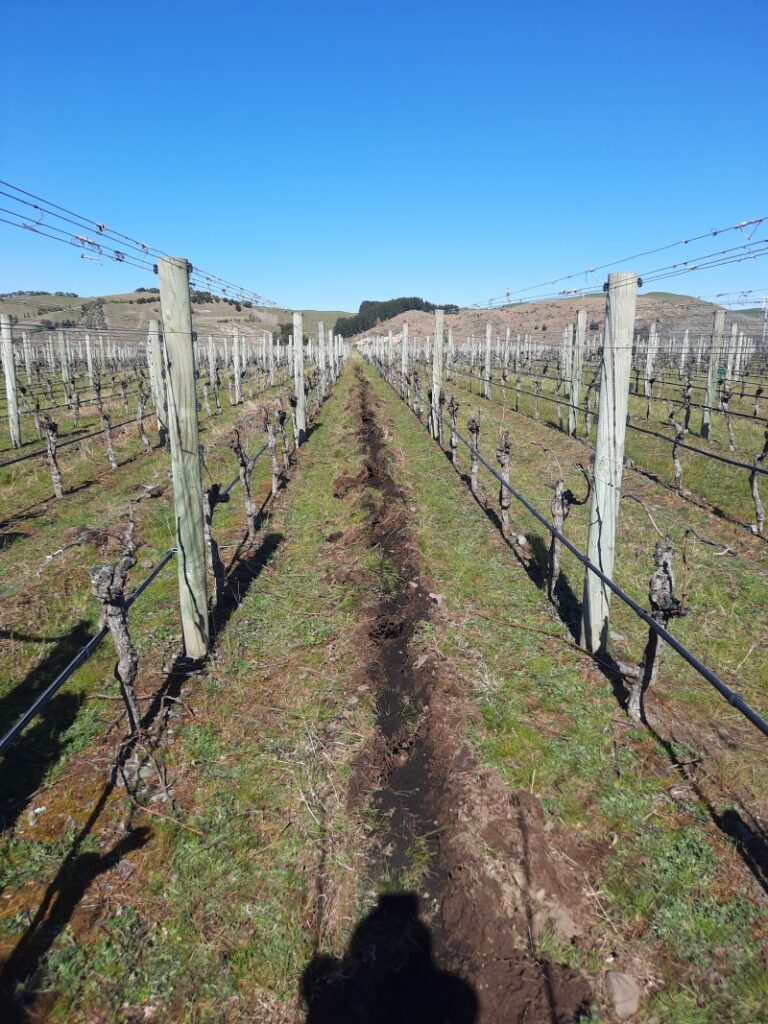BNNZ have supported a new media production effort focused on getting the word out to the public on biochar. This film clip has been posted to the BNNZ FB page. Your comments there would be welcome.
Thanks to Joany & the team at Massey university.


BNNZ have supported a new media production effort focused on getting the word out to the public on biochar. This film clip has been posted to the BNNZ FB page. Your comments there would be welcome.
Thanks to Joany & the team at Massey university.

ANZBIG’s May newsletter provides the following announcement and also provides a link to the BNNZ newsletter archive. BNNZ are pleased to reciprocate in future newsletters.

Rod Laurence has been growing Paulownia trees near Hamilton for about 30 years. The timber produced from paulownia has long been in demand for specialist applications due to its unique qualities (https://www.nzffa.org.nz/specialty-timber-market/showcase/paulownia/).
Rod’s plantation was hit by storm damage recently, leaving him with a lot of wood-fall to clean up. This lead to a busy day of biochar production … just the 2nd run in a new WarmHeart 2000L flame cap kiln (search “warmheart” for other posts on this kiln).









Paulownia bark & leaves are ‘animal ice-cream’ but it also produces a very interesting biochar and is very easy to process (rocket fuel). Rod will have pawlownia biochar available for clients soon. Do get in touch if you want to connect with him.
Turf master brings know-how to Yarrow Stadium main pitch project – Council
Could we see the Allblacks playing above AllBlackEarth one day soon? Now, if we could get the national team to offset their rather large carbon bootprint via CDR & biochar voluntary markets, then that would be a nice circular story.
Here is a link to the Yarrow stadium FB page with more on this story, including video of application work.

https://www.hbfuturefarming.org/news/article/31/craggy-range-trial-holds-water-nutrients-
Ralph Sims talks to … “The third and final section of the latest IPCC report outlines how we can reduce greenhouse gas emissions, as well as remove them from the atmosphere.“
He mentions biochar in the discussion… ““Soil carbon has been quite controversial, as I understand it, in this approval process, quite what the role of biochar is (producing charcoaling effects from biomass and then locking it up in the soil), there are problems with doing that, so it’s not going to be a simple solution.”
A search on ‘biochar’ in the nearly 3,000 page report pulls quite a few results with some attention in bioenergy (chapter 6) but some dedicated coverage in Chapter 7: (7.4.3.2)


There are some NZ names listed as authors of this section:

I’ve been a bit slow discovering this Global Research Alliance research summary in which NZAGRC staff are listed as contributing authors.

The report does not get too excited about biochar efficacy but page 7 does keep the door open to more research…

Biochar is covered mainly in pages 50, 51 & 52 and there are plenty of useful references.



It would be great to get some feedback from the international biochar community on this report so I will forward this to biochar.groups.io for comment.
I’ve attended one of the virtual HWEN road shows and today, a followup Q&A session. I managed to squeeze in two short biochar related Qs from my phone. Both Qs were answered by Dr Jacqueline Roweth:
1.) “Biochar can be easily measured. Why not this as soil carbon” (my followup to someone else’s Q on why HWEN was not supporting using soil carbon which JR answered verbally)

2.) “Why not allow a farm to baseline their soil carbon to best science practice and then monitor to an agreed standard. Individual farm option“

Note the reference to NZAGRC in each of the replies and my previous post on the new NZAGRC 2021 report. So, the big Q for me is: can the biochar community & BNNZ address these foreseen issues with biochar and soil carbon?
NZAGRC has recently shared a report covering their progress in 2021. The report does mention biochar on pg30…

I posted on this MPI commissioned report here: https://soilcarbon.org.nz/important-new-report-for-nz/
I can’t recall seeing any synopsis coming from the Wellington presentation but I guess we can say that this useful work has not lead to any new investment on biochar research. I suggest that this research investment is needed for biochar to overcome foreseen financial and practical barriers “to provide cost-effective mitigation at scale“.
Bringing biochar into the ETS would help overcome the financial barriers but so would govt support for demonstration projects. I look at the practical barriers and see exciting opportunities.
I’ve been very under-whelming recently on my posting the this site. A few months ago I managed to shut myself out of the site which is not a good look when you are the site administrator. Most of the NZ based biochar stories that I focus on here where captured as articles in the ABE newsletter but I now see that the newsletters are not an easily searchable archive so I may bring a few back here for the record… particularly the recent & busy BNNZ workshop history.
I’ve been working with the BNNZ committee on a plan to produce a series of white papers on biochar in NZ. This was actually instigated by Brian Cox from BANZ when he asked for comment on a Technical Note they had produced on bio-carbons that covered biochar. BNNZ contributed to this which is now published as TNSB82 on the BANZ website. BNNZ have also provided BANZ with a biochar focused TNSB05 which we hope to see on their website soon.
From this effort it was a simple journey to the first BNNZ white paper, BNNZ-WP-01 (see link to “Biochar explained” on the home page).

We have a long list of industry and issue focused white papers that we plan to produce. Do get in touch if you can contribute in any way.